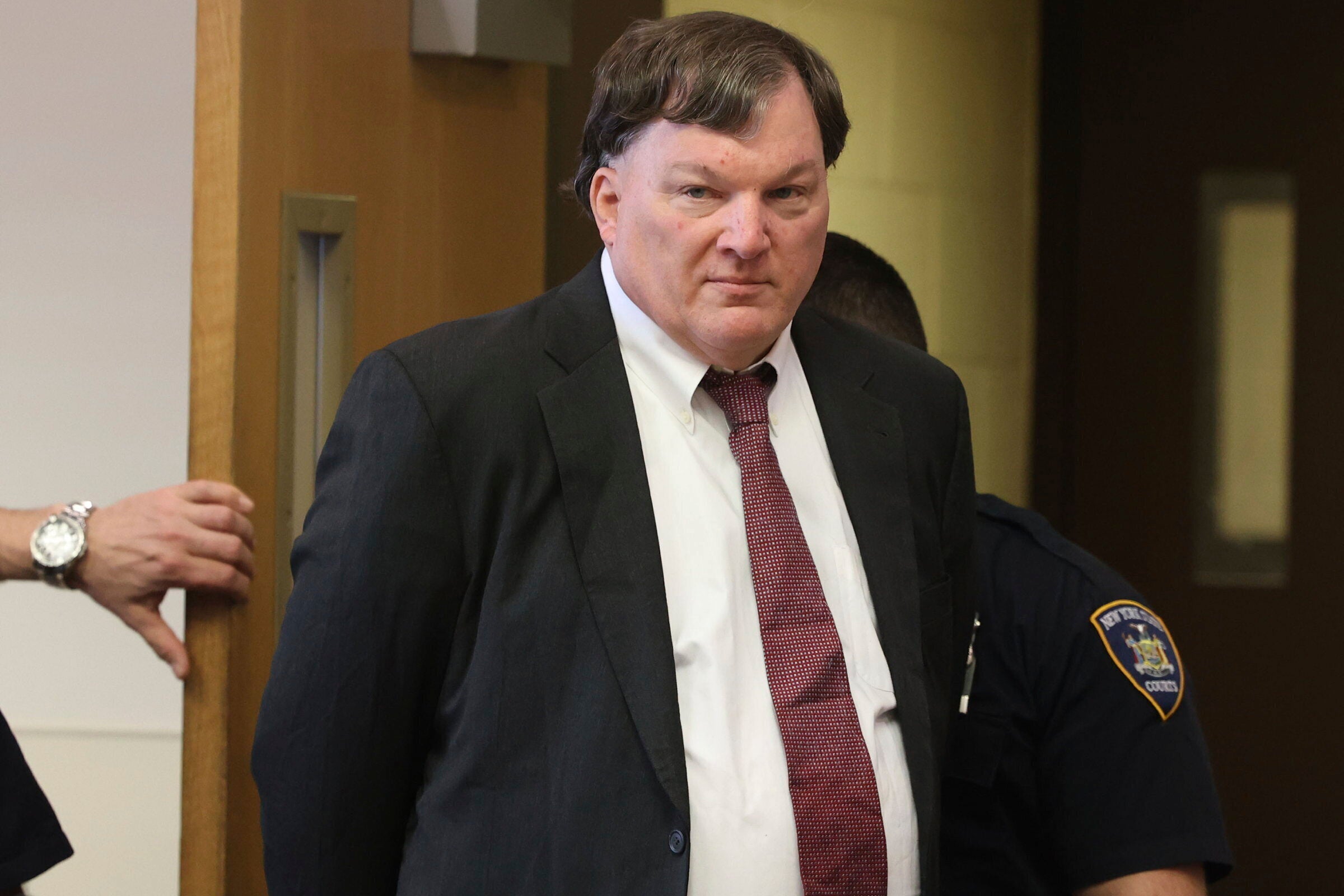Big blow to accused serial killer Rex Heuermann’s defense after judge rules on evidence in Gilgo beach murders trial

A New York judge has ruled that critical DNA evidence will be allowed to be used at the upcoming trial of alleged Gilgo Beach serial killer Rex Heuermann.
Heuermann’s defense team challenged the evidence since it was obtained using “whole genome sequencing,” a new DNA technology that had never been used in a New York court.
But prosecutors successfully argued in a series of hearings this year that the technology was derived from accepted scientific methods.
“The science was on our side,” Suffolk County District Attorney Raymond Tierney said following the announcement.
Heuermann, 61, appeared in a Riverhead courtroom on Wednesday as Suffolk County Supreme Court Justice Timothy Mazzei ruled that prosecutors can use the DNA testing method in the case against the suspected killer.
Heuermann was arrested in July 2023 outside his New York City office as part of an investigation police had been working on since 2010 into the deaths of at least 10 people — mostly female sex workers — whose remains were discovered along an isolated highway near Gilgo Beach on Long Island.
He has been charged with the murders of seven women.

As prosecutors built the case against Heuermann, they pointed to a trove of evidence: cell phone data, search histories, eyewitness accounts – and DNA.
The way that DNA was tested quickly became a focal point in the closely watched case.
Prosecutors say the technique is reliable and helped link Heuermann or his family to victims whose bodies were discovered along Ocean Parkway in 2010.
The technique, carried out by California-based Astrea Forensics, allowed investigators to analyze hairs without roots, and degraded samples that traditional testing couldn’t process.
Even without Astrea’s findings, prosecutors point to extensive digital, forensic and witness evidence they say ties Heuermann to the murders.
When 25-year-old Maureen Brainard-Barnes’ skeletal remains were discovered in the roadside scrub near Long Island’s Gilgo Beach in the winter of 2010, investigators faced a daunting challenge.

Despite the grim find, there was scant physical evidence to identify her killer, save for a single, degraded strand of hair.
At the time, extracting viable DNA from such a sample was beyond the capabilities of forensic science, leaving detectives to search for other clues in their hunt for a suspected serial killer scattering women’s bodies along the coastal parkway.
However, a significant breakthrough emerged approximately seven years ago. Investigators turned to Astrea Forensics, a California-based laboratory pioneering new techniques to analyze old, highly degraded DNA samples, including rootless hairs like the crucial one found alongside Brainard-Barnes’ body.
Prosecutors have amassed other evidence against Heuermann, who is accused of killing women as early as 1993.
In court filings, they say cellphone call information and tracking data show that Heuermann arranged meetings with some of the victims shortly before their disappearances.

Last year, prosecutors revealed they had recovered from Heuermann’s computer files what they describe as a “blueprint” for the killings, including a series of checklists with reminders to limit noise, clean the bodies and destroy evidence.
They also have a second DNA analysis completed by a separate crime lab that used more traditional methods long accepted in New York courts. They say those findings, from Mitotyping Technologies, also convincingly link hairs found on some victims to either Heuermann or members of his family.
Investigators say that as he disposed of his victims, Heuermann used items from his house — including tape, belts, bags and a surgical drape — that had traces of hair from his wife and daughter.
In Brainard-Barnes’ case, though, only the advanced DNA tests performed by Astrea identified a match, finding the hair found with her remains belonged to Heuermann’s wife.

The Gilgo Beach murders
Heuermann was first charged with the murders of Melissa Barthelemy, Amber Lynn Costello, and Megan Waterman, whose bodies were found between 2009 and 2010.
While in custody, Heuermann was subsequently charged in the deaths of four other women: Valerie Mack in 2000, Jessica Taylor in 2003, Maureen Brainard-Barnes in 2007, and Sandra Costilla in 1993.
Heuermann’s now ex-wife, Asa Ellerup, who lived in the Massapequa Park home they shared with their children on Long Island, filed for divorce a short time after his arrest. A settlement was reached earlier this year.
Prosecutors also say Heuermann kept a “blueprint” of his alleged crimes on his computer that included a series of checklists with tasks to complete before, during and after the killings, as well as practical lessons for “next time.”

Michael Brown, Heuermann’s attorney, wants to break the case into multiple trials over concerns about the “cumulative effect” of the evidence presented by prosecutors. Prosecutors have opposed that request and Mazzei is expected to rule on it soon.
In “The Gilgo Beach Killer: House of Secrets,” a three-part documentary released on Peacock this summer, Ellerup defended his innocence, referring to Heuermann as “her hero” while their daughter, Victoria, said she believes her father is “most likely” the Gilgo Beach serial killer.
Heuermann has maintained his innocence and pleaded not guilty to all counts.
A trial date has not yet been set.




